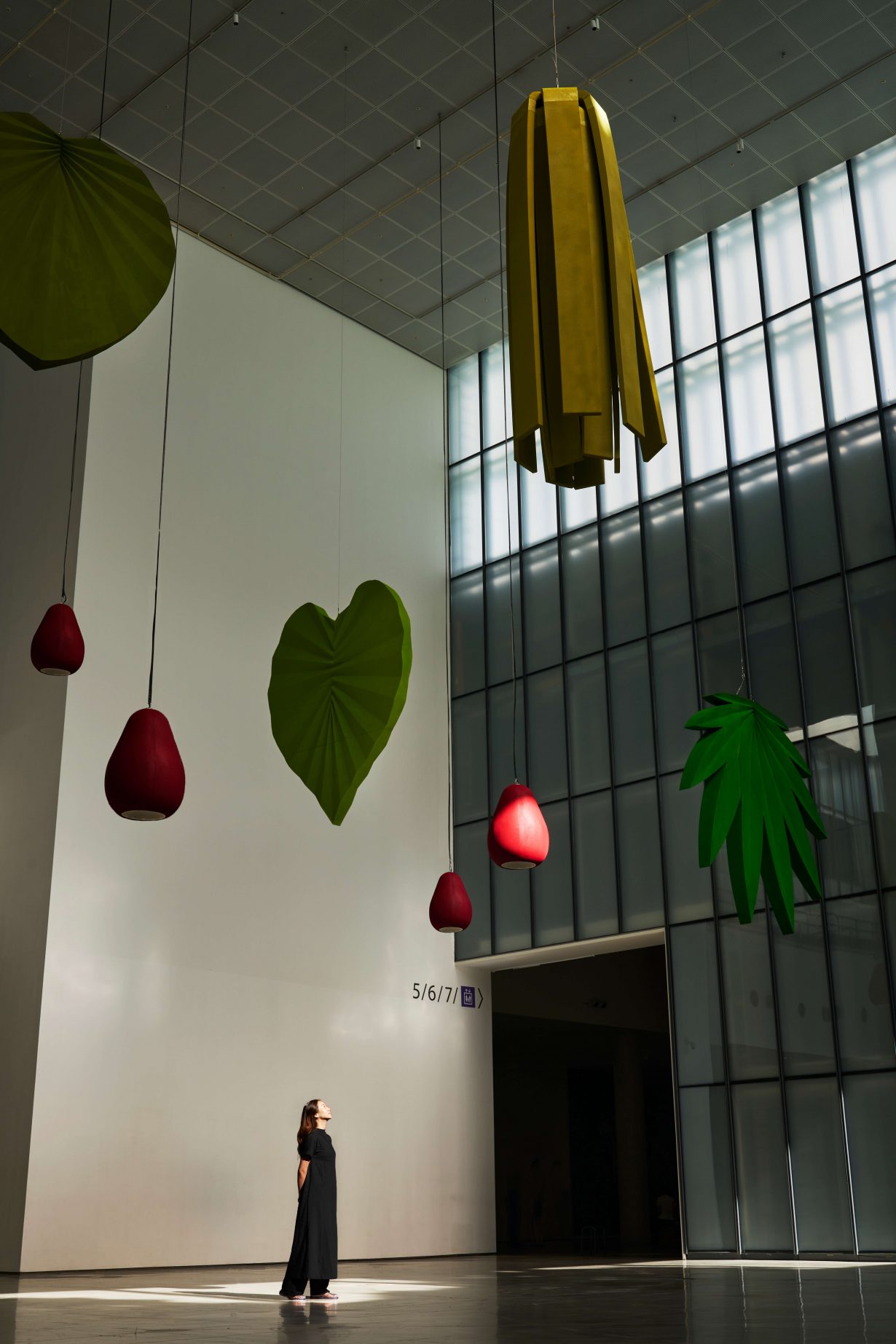 Main poster image of "The Miracle and the Sleeper," Doonamjae Art Center, Seoul. © Doonamjae Art Center.
Main poster image of "The Miracle and the Sleeper," Doonamjae Art Center, Seoul. © Doonamjae Art Center.The Miracle and the Sleeper is taking place at the Doonamjae Art Center from September 1 through October 30, 2022, featuring works by Korean artists born in Korea from the late 1960s to the mid-1970s. Through the works of nine artists; Osang Gwon (b.1974), Kira Kim (b. 1974), Yoo Seunho (b. 1974), Lee Dongwook (b. 1976), Jeongbae Lee (b. 1974), Lee Jinju (b. 1980), Jaeho Jung (b. 1971), Xooang Choi (b. 1975) and Hong Kyoungtack (b. 1968), the exhibition explores the flow of Korean history, politics, society, and culture.
The title of the exhibition comes from the song Metropolis Pt. 1: The Miracle and the Sleeper from the album Images and Words (1992) by the American progressive metal band Dream Theater. A masterpiece at the end of the 20th century, it tells the story of a person who sees his or her past life in a dream.
During the economic development period, choosing to become an artist was in all aspects the opposite of becoming a productive member of the society of their parent’s generation. These artists were considered dreaming “sleepers” who were bohemians, freedom-loving nomads, and even resisters who viewed the rapidly growing cities in a cynical way.
These artists are the generation who experienced the modernist generation but chose to take a different path and pursue a miracle in which reality and illusion exist at the same time.
Through paintings, sculptures, videos, and other artworks, the exhibition reflects the rebellious but open and straightforward demeanor of these artists towards Korean culture, tradition, society, and history.
 Partial exhibition view of "The Miricle and the Sleepter" at Doonamjae Art Center, Seoul. Photo by Aproject Company.
Partial exhibition view of "The Miricle and the Sleepter" at Doonamjae Art Center, Seoul. Photo by Aproject Company.Through sculptural and relief works, Osang Gwon reflects the contemporary reality of overproduced images and reveals the consumerism derived from these images.
Working in various genres, Kira Kim considers the social role of artists. By collaborating with different communities from various fields, the artist attempts to create an open space to contemplate and discuss the problems in today’s society.
Yoo Seungho subverts the relationship between language and image by drawing images such as Korean traditional landscape paintings with handwritten texts. Through this process, the artist freely crosses the roles and relationships between text and image, tradition and contemporary, meaning and form, and abstraction and figuration.
Well known for creating miniature human figures, Lee Dongwook lays a critical view of our society from a personal perspective. Utilizing his interest in collecting and observing things, Lee reflects his concern towards today’s fragile human beings through his sculpture works.
 Partial exhibition view of "The Miricle and the Sleepter" at Doonamjae Art Center, Seoul. Photo by Aproject Company.
Partial exhibition view of "The Miricle and the Sleepter" at Doonamjae Art Center, Seoul. Photo by Aproject Company.Artist Jeongbae Lee expresses contemporary landscapes influenced by desire and capital. This landscape is inspired by traditional Korean landscape painting, but the landscape of the cities and the nature fragmented by the capitalist society is geometrically shaped and made with artificial materials.
Lee Jinju, who works with the techniques from traditional Korean paintings, records images that exist at the boundary between memories, dreams, consciousness, and reality. The images Lee depicts sometimes evoke uncomfortable sentiments but reveal the organic relationship between the individual and society.
Artist Jaeho Jung records the contemporary environment in the form of oriental paintings. Jung constructs a new narrative by bringing parts of images from contemporary society and rearranging them in a new way. The artist has been working on paintings that criticize reckless industrialization and urbanization.
The human sculptures of Xooang Choi depict the most ordinary person we can find in our lives. But the figure’s body parts are distorted or composed in a bizarre way. Choi attempts to visualize our lives saturated with pathological psychology, such as megalomania.
Hong Kyungtack creates paintings that visually express the desires inherent in modern society through the colors and shapes of objects such as books, pencils, and golf clubs. In this exhibition, the hands drawn in the achromatic space are drawn to express the desires of human beings and the existence of the absolute.





















